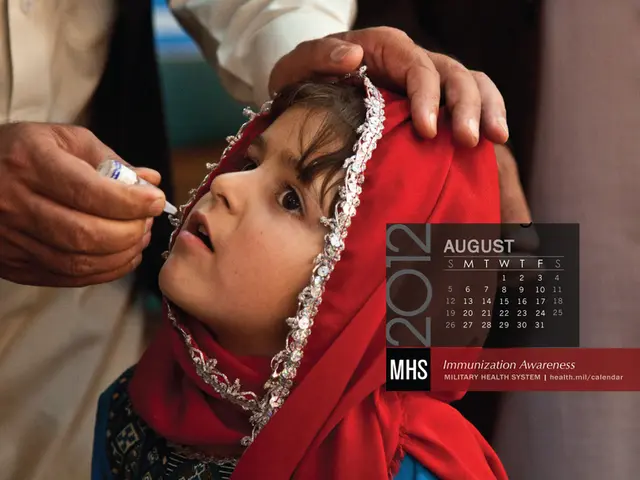Rapid and Severe Rosacea: Understanding Causes, Signs, and Remedies
Losing the Red, Angry Skin Battle? Rosacea Fulminans May Be the Culprit
Ever encountered a sudden flare-up of painful, swollen red bumps on your central face? If yes, you might be dealing with rosacea fulminans, a severe variant of rosacea. Here's what you need to know about this pesky condition.
Rosacea fulminans, often called pyoderma faciale, is a skin mystery. Although it starts all of a sudden, it typically targets the chin, cheeks, and nose, leaving you with flushed, agonizing pustules and nodules that merge together. While it's more common in women of childbearing age, the cause behind this condition remains shrouded in mystery.
As per a 2020 review, there might be a connection between rosacea fulminans and other conditions, such as inflammatory bowel disease or pregnancy. Interestingly, people who have experienced some form of rosacea before might find themselves more susceptible to this fierce flare-up[1].
Stress, hormonal changes, and certain medications have been identified as potential triggers for rosacea fulminans. Speaking of medications, keep an eye on any potential side effects while using them. A 2021 literature review indicates that specific dietary factors can trigger or aggravate rosacea symptoms, but this information isn't exclusive to rosacea fulminans[2].
So, what can set off those irritating flare-ups for you? Take a gander at these potential dietary triggers:
- Spicy foods
- Alcohol
- Foods rich in cinnamaldehyde, like chocolate, tomatoes, and citrus fruits
- Histamine-rich foods like wine, aged cheese, and processed meats
- Hot drinks
However, individual triggers can vary greatly from person to person. So, healthcare professionals generally don’t recommend a one-size-fits-all dietary approach for all rosacea sufferers[2].
Now, let's talk about the unmistakable symptoms. Rosacea fulminans primarily affects the forehead, nose, cheeks, and chin, characterized by sudden skin color changes, such as redness, painful pustules, swelling, inflammation, flushing, and stinging or burning sensations. A few might even experience ocular symptoms, like dry, itchy eyes and light sensitivity[1].
Although rare, systemic symptoms like fever and fatigue can occur in some cases[1]. It's essential to consult a healthcare professional if you experience these symptoms.
Treatment for rosacea fulminans might involve prescription-only acne medication like oral isotretinoin or oral or topical corticosteroids. Sometimes, a combination of antibiotics, corticosteroids, and lifestyle changes, such as stress reduction techniques, may do the trick[1].
While these approaches offer some relief, remember that identifying and avoiding triggers is crucial for managing rosacea symptoms. Lowering stress levels through techniques like mindfulness meditation, deep breathing exercises, regular exercise, and journaling can help, as well as making certain dietary changes, such as reducing alcohol intake[2].
Using gentle skin care products on the face and regular sun protection are also vital parts of your rosacea management arsenal[3].
Don't hesitate to consult a dermatologist or healthcare professional if you notice symptoms that go beyond typical rosacea or acne. Seek their guidance promptly to receive an accurate diagnosis and effective treatment. After all, quick action can help you get a handle on your symptoms and reduce the risk of complications, including scarring and infections[3].
- Rosacea fulminans, a severe form of rosacea, often targets the skin of women in childbearing age and is a mystery in the field of dermatology.
- Certain medical conditions, such as inflammatory bowel disease or pregnancy, might be connected to rosacea fulminans, according to a 2020 review.
- In addition to stress and hormonal changes, certain medications, spicy foods, alcohol, cinnamaldehyde-rich foods, histamine-rich foods, hot drinks, and specific dietary factors can trigger or aggravate rosacea symptoms, including rosacea fulminans.
- To properly manage rosacea fulminans, seeking advice from healthcare professionals and dermatologists is crucial for an accurate diagnosis, effective treatment, and to minimize complications such as scarring and infections, especially while focusing on identifying and avoiding triggers for the condition.








